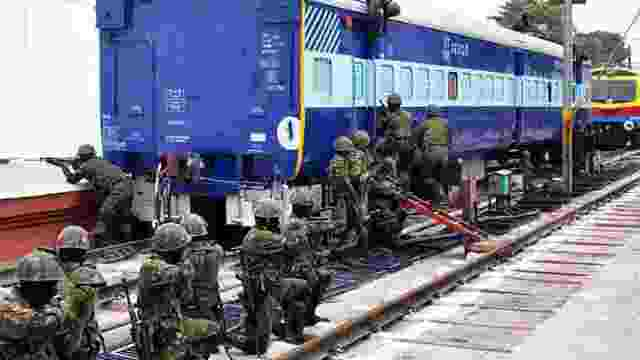Introduction
India’s railway network is not just a means of transportation; it's a lifeline that weaves through the tapestry of the nation, connecting people, cultures, and landscapes. One of the remarkable features of Indian trains is their impressive length, spanning thousands of kilometers across the vast subcontinent. Let's delve into the fascinating world of Indian trains, exploring the longest routes and understanding why these trains are longer compared to those in other countries.
Longest Train Routes in India
The crown jewel of Indian railways is the Vivek Express, which traverses a staggering distance of 4,154.1 kilometers from Kanyakumari in the south to Dibrugarh in the northeast. This epic journey takes around 75 hours and 30 minutes, making stops at 57 locations across 8 Indian states. But it's not alone; there are other notable routes like the Thiruvananthapuram–Silchar Aronai Superfast Express, Himsagar Express, Ten Jammu Express, and many more, each spanning thousands of kilometers and connecting distant corners of the country.
Why Are Indian Trains Longer?
The length of Indian trains is influenced by several factors, primarily revolving around the infrastructure and operational needs of the Indian Railways.
1. Loop Line Length
Loop lines are sections of railway tracks where trains can stop for various purposes, such as overtaking or allowing other trains to pass. In India, the standard length of a loop line is around 650 meters. Therefore, to fit within this loop line, the trains cannot exceed this limit.
2. Platform Length
Platforms at railway stations are designed to accommodate the entire length of trains. Unlike some other countries where platforms are shorter and require trains to stop at specific sections for boarding and alighting, Indian platforms are typically long enough to accommodate the entire train. Hence, the length of trains in India is adjusted to match the platform length.
Comparative Analysis
While Indian trains are undeniably long, they may not hold the record for the longest individual train. The world's longest train route stretches over 6 days, covering an astonishing distance. However, India's focus on longer trains is driven by the need to efficiently serve its vast and diverse population while maintaining operational feasibility within its existing infrastructure.
Benefits of Longer Trains
Despite the challenges posed by managing longer trains, there are several benefits associated with them:
- Efficiency: Longer trains can carry more passengers or freight in a single journey, reducing the number of trips required and optimizing resource utilization.
- Accessibility: Longer trains offer greater accessibility to remote areas, allowing people from various regions to connect more easily.
- Cost-effectiveness: Operating longer trains can be more cost-effective than running multiple shorter trains, especially in terms of fuel and labor expenses.
- Reduced Congestion: By accommodating more passengers or cargo in a single journey, longer trains can help reduce congestion on tracks and at stations.
Conclusion
Indian trains, with their remarkable lengths and extensive routes, symbolize the unity and diversity of the nation. From the southern tip of Kanyakumari to the northeastern reaches of Dibrugarh, these trains traverse the length and breadth of the subcontinent, connecting people, cultures, and economies.
The length of Indian trains is a result of careful planning and adaptation to the unique requirements of the country's railway infrastructure. Loop line and platform lengths play a crucial role in determining the maximum length of trains, ensuring operational efficiency and passenger convenience.
While Indian trains may not hold the record for the longest individual train, their significance lies in their ability to serve as a vital lifeline for millions of people across the country. As India continues to modernize its railway network, longer trains will remain a testament to the enduring legacy of its railroads.


.jpg)


.jpg)
.jpg)
.jpg)
.jpg)
.jpg)
.jpg)

.jpg)
